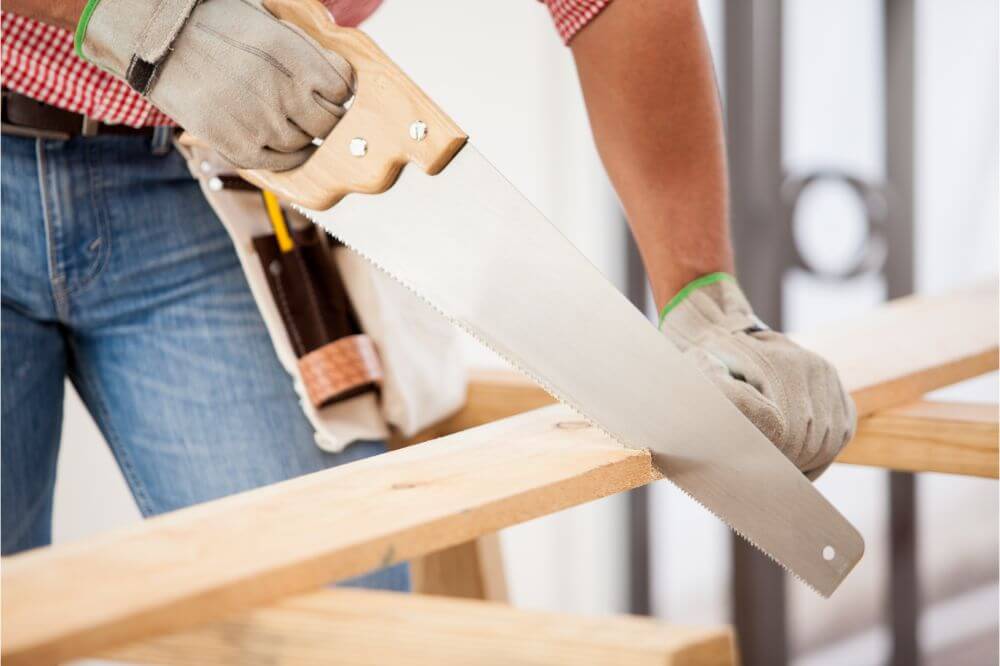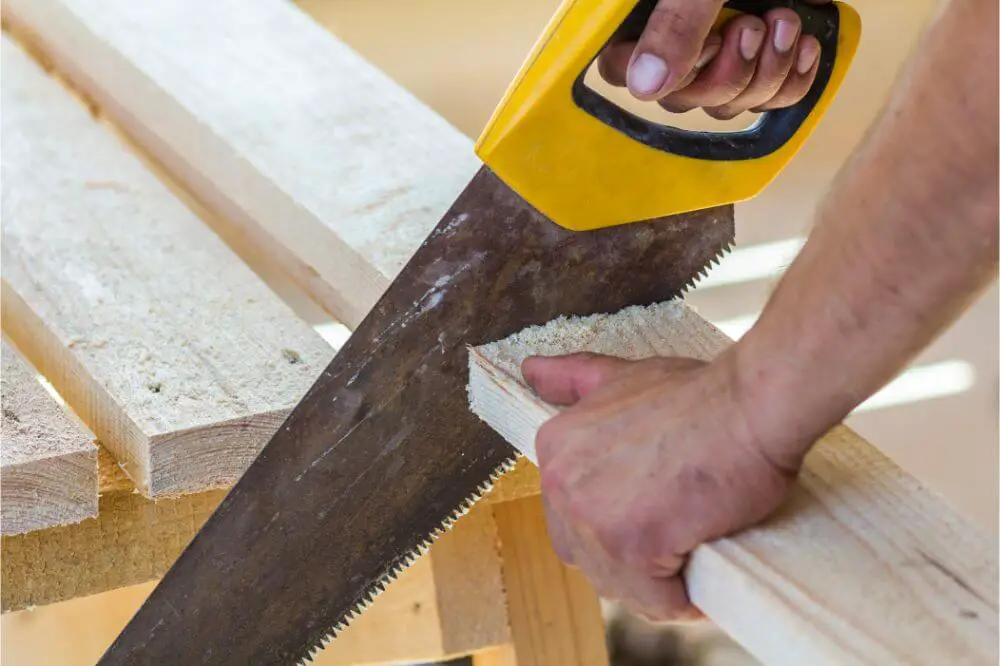Cutting a 60-degree angle into a board isn’t that difficult, and most people would use a miter saw. A miter can accurately measure the angle and make the cut in one easy step.
However, you might not have access to a miter saw. If you have only a handsaw, no worries because it’s possible to make a 60-degree angle cut.
Using a handsaw to make a 60-degree angle cut is like making any other cut with a handsaw. However, the more challenging aspect is measuring that 60-degree angle.
If you don’t have a miter saw, you will need to measure the angle yourself. Today, we will discuss several ways to cut a 60-degree angle with a handsaw.
There are various ways to correctly measure a 60-degree angle to get an accurate cut. This includes using a protractor, an angle finder, a miter box, or another board with a 60-degree angle cut in it.
The Measuring
The hardest part of this job is getting that 60-degree angle right. Therefore, you first need to make the appropriate measurements and markings before you can use your handsaw to make the cut. There are several ways to make an accurate 60-degree marking on any board.
Using a Miter Box
Perhaps the easiest way to make a 60-degree angle cut is by using a miter box. A miter box is designed to measure various angles that can be easily cut. A miter box features two walls between which a board can fit.
There are various slots in these walls that correspond with various angles. So, simply put the board into the miter box and then cut along the 60-degree angle line.
Using Another Board with a 60 Degree Angle
Another way to measure a 60-degree angle on a board is to simply use another board with a 60-degree angle cut into it.
Just hold one board over the other board; make sure everything lines up, and then use a pencil or marking knife to mark that line.
You can trace the line from the already-cut board onto the board you plan to cut. It really doesn’t get much easier than that.

Using a Protractor
When we talk about a protractor, we mean that semi-circle piece of plastic you used in school to measure angles. This is a perfect tool to measure the angle on a board, whether 60 degrees, 45 degrees or anything in between.
If you are cutting a 60-degree angle at the end of a board, line up the end of the protractor with the corner of the board; mark the 60-degree angle; make a line, and you are good to go. If you need to cut a 60-degree angle not at the edge of the board but rather in the middle, you can use a T-square.
Use a T-square to mark a perfect 90-degree vertical line from the top of the board to the bottom. Then, line up the end of your protractor where it says zero degrees, with the bottom of that line you made with the T-square. You’ll then mark the 60-degree angle according to the protractor.
Using an Angle Finder
Another way to measure and mark that 60-degree angle is by using an angle finder. An angle finder consists of essentially two rulers connected by a digital angle measuring device. Simply move the two sticks until the angle finder reads 60 degrees.
To make the cut from the end of the board, line up the corner of the angle finder with the corner of the board. However, if you are making a cut on the interior of a board, you will first need to use the T-square.
Use your T-square to mark a perfect 90-degree vertical line from top to bottom. Then, line up the corner of the angle finder with that line, and make a mark with a pencil or other marking tool.
Making the Cut
Now that we have gotten the hard part out of the way, we can make the cut. We’re going to go through a simple step-by-step process to make the cut using your hand saw.
First, ensure you have the right handsaw for the job. Remember that blades designed for hardwood are not the same as those intended for softwood. In addition, you need to have the right kind of tooth count and tooth size for the specific type of wood.
Next, line up the handsaw blade with the 60-degree angle line you measured.
Hold the handsaw firmly in your dominant hand while holding the board with your other hand. The saw’s end should be pointing downwards slightly, up to a 45-degree angle. It will be much easier to make an initial cut and get enough momentum to easily cut through the board if you have the front end of the blade pointed downwards.
Start making the cut while applying moderate pressure. Use long and smooth, not short and fast, for better results. Continue cutting until the two parts of the board have been separated.
Conclusion
Cutting a 60-degree angle with a handsaw is not that difficult, as you can see. The hardest part is to get the measurement right. However, there are various methods for doing so. Which measuring method you use depends on the tools you have.


